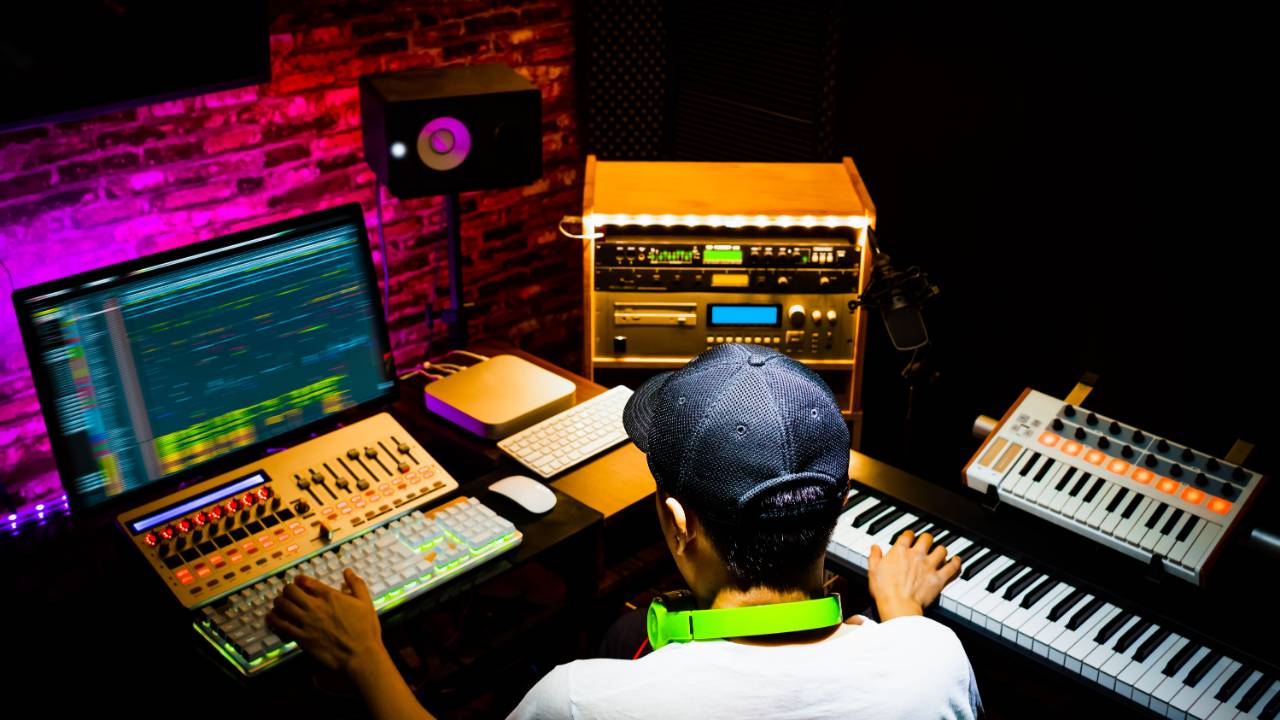
Keywords: Saturation, harmonics, compression, clipping
This letter is based on week 4 of the 8-week Dynamics Module happening in DOPE right now - click here to join for the full lesson, guided tutorials, mentorship, and resources that will help you make music that earns money.
Get warmth and glue without over-clipping or obliterating.
Producers who want more power, loudness, and clarity in their mixes often ask me how I “glue” my drums together.
I use to just compress the entire bus.
But this would squash out the entire energy of the drums.
Then I got into clipping , which was better.
But the issue with clipping my drum bus super hard just to glue them is that it wouldn’t sound transparent. That means it sounded unnatural.
In mixing, we want as much transparency as possible with clipping and limiting (clippers and limiters do their best when they aren't over worked). Non-transparent clipping and limiting is fine if you’re okay with the consequences:
- Loss of loudness.
- Loss of clarity.
- Less competitive sounding exports.
- Less “human” feel in your music (it’ll sound bland and computeristic).
Saturation is the best tool I've found for getting that color and glue without overloading my clippers and limiters.
[Jam Dougie’s new single “T’d Up” on our “Dark Trap Beats” playlist 🔥]
Words are still confusing, but we already know a bit about saturation!
Saturation is the result of overloading the physical components of analog gear (it’s an unintentional byproduct that can be used with creative intent).
Two things happen as a result:
- Change in dynamics (compression - a word we already know a ton about because of this newsletter).
- Change in tone (harmonics).
Driving the signal into the ceiling causing non-linear compression in ratio to the amount you’re exceeding - this compression is saturation.
It’s similar to soft clipping due to multiple instances of non-linear transition.
The difference is this happens “at the bottom” without you obliterating your sounds with overloaded top-of-chain clips (soft clipping is another topic we defined and covered in detail here).

The harmonics added are either;
- Even (adding more edge and bite), or
- Odd (adding more warmth and body).
[Jam Jew’s new single “Tyson” on our “Dark Trap Beats” playlist 🔥]
And that's pretty much it.
That’s the cool thing about studying engineering. The more you do it, the more you understand the field overall.
That’s why transient shaping seemed so similar to compression, and why saturation seems so similar to clipping.
The power of understanding nuance easily separates you from producers who don’t care.
Learning and mastering the craft is artist development for producers.
It’s 2024 - it’s time for us to make and release out own music. Singers and rappers are already mixing their stuff start to finish (AND mastering it), and releasing it on their own.
Ain't no “just send it to the engineer to fix my shitty mix” with serious independent artists; it’s time for producers to finally grow up and start thinking the same way.
Your stuff has to be competitive in quality, clarity, and loudness.
Then you need to focus on the marketing aspect (remember, we aren't making these beats for no reason).
Create content, send beats to artists, sell digital merch (run the bag up by leveraging your good music) - the "1000 USD per Month is Achievable for Any internet producer who tries" full course shows you how to do that .
For now, I wanna get back to the beat making side to show you my favorite way to use saturation!
[Jam SupahMahns’s new single “Sad Girl” on our “Dark Trap Beats” playlist 🔥]
How I glue my drums together with saturation.
Pretty simple stuff here once you understand all the dynamic concepts we’ve discussed.
My saturation tool of choice for drums (and everything else really) is Radiator.

I love it because its saturation is the result of pushing your signal through 2 tubes with dry/wet control on the output! (if you’re a nerd, you know how cool that is).
The input knob controls the amount of gain into the first tube, which also determines the amount of saturation (they increase or decrease in a direct relationship).
The output knob controls the volume of the effected signal.
And the mix knob lets us parallel process the wet saturated signal with the dry un-effected signal for the perfect blend of dynamic and tonal glue!
I usually put Radiator on my Composite Drum bus (learn about busses and sends in this signal flow lesson):

And then I adjust the settings to my preference - here’s one of my favorite presets:

And like I said last week….
We got you. We tricked you into learning mixing, but don’t worry - it’s for your own good.
You’re a sound wizard in training now.
So peep the previous letters on dynamics:
- Week 1 - Compression.
- Week 2 - Clipping.
- Week 3 - Transient Shaping.
Get up to speed with saturation shaping too, because we’re moving - next week is limiting.

Get Sound Kits 👇







